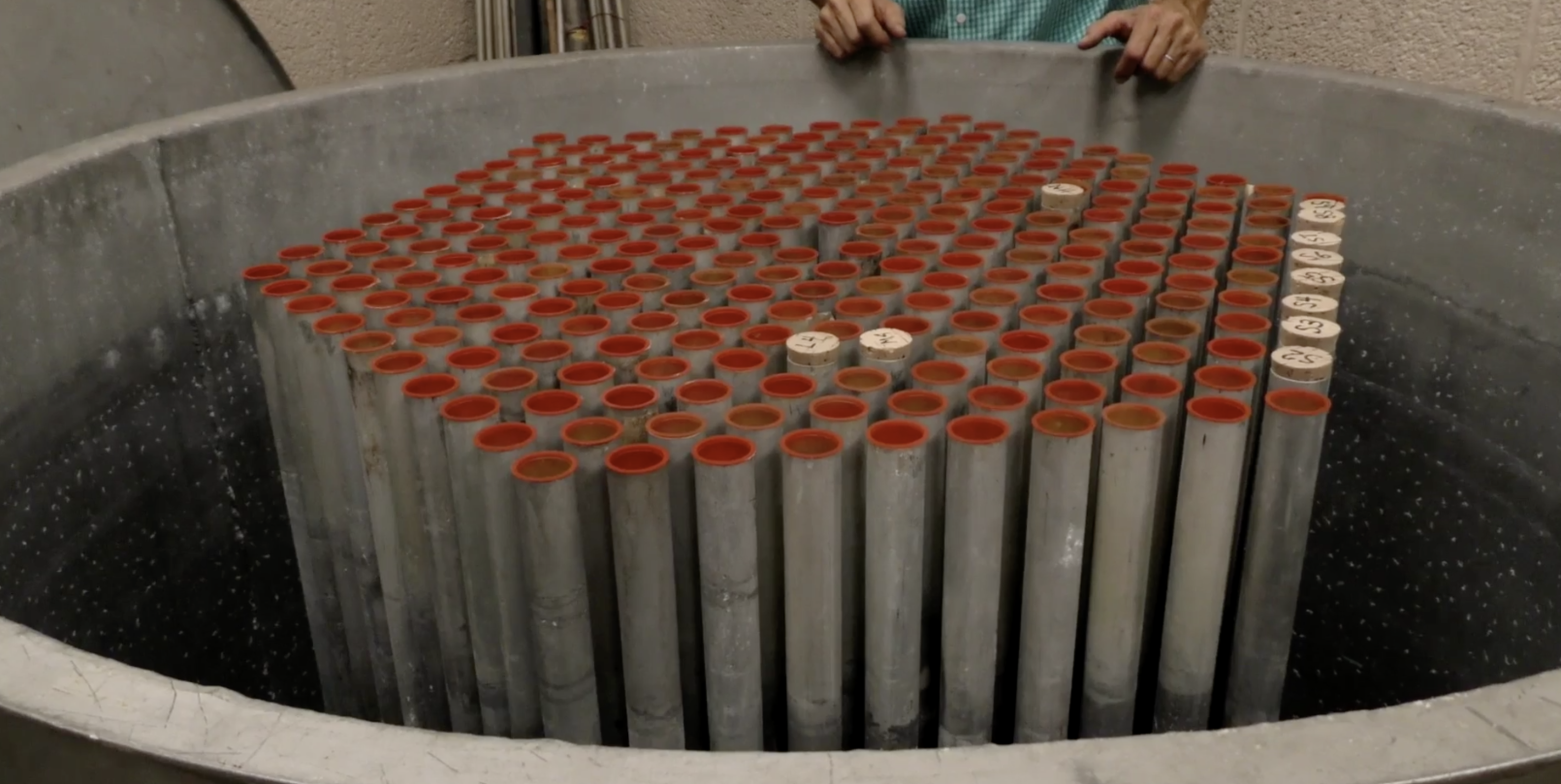By Yousof Hamza
Youngstown State University is one of only two colleges in Ohio home to a nuclear reactor.
Located in Ward Beecher Hall, the reactor is a metal cylinder about 6.5 feet tall and 5 feet in diameter. It contains 272 tubes, each with five pellets of natural uranium. YSU’s subcritical nuclear reactor is occasionally used by students for experiments.
Gregg Sturrus, acting chair of the physics, astronomy, geology and environmental sciences department, said the reactor was built to supplement YSU’s previously offered nuclear engineering minor.
“The idea was, back in the ’60s, you know nuclear power’s going to be the wave of the future, so let’s train some people,” Sturrus said.
The reactor was first used in 1962, and the uranium was provided on loan by the Atomic Energy Commission, according to Jambar articles written in November 1961 and May 1962.
The nuclear engineering minor was eventually dropped due to retiring faculty and a lack of interest in nuclear power after the Three Mile Island accident in 1979.
There was a partial meltdown at the nuclear reactor in Londonderry, Pennsylvania, which released radiation into the environment. It is the worst nuclear accident in U.S. history.
While Sturrus said he doesn’t believe the nuclear engineering minor will be reinstated, he wants students to think about the future of nuclear energy.
He said with the rise in electric vehicles, there needs to be enough electricity produced to drive the world’s transportation.
“Maybe it’s hard to say, because it’s politically not very favorable — [but] nuclear energy will once again be the way to go. I don’t know,” Sturrus said.
While nuclear energy may be controversial, there’s no possibility of a radiation accident on campus, Sturrus said, because the reactor is unable to sustain a nuclear chain reaction.
“So, someone’s going to give you a lawn mower, but doesn’t give you any gas. That’s what we got,” Sturrus said. “We’ve got the lawn mower sitting there with no gas. No possibility of gas. So there is no possibility of that thing blowing up, unless somebody dropped the bomb on it and the bomb blew up. It just can’t go critical.”
Sturrus said the reactor is used by the Modern Physics Lab and it’s been about 10 years since they used the reactor. This has been influenced by safety concerns for female students.
University radiation safety officer Tim Styranec said for best practice, the university errs on the side of caution.
“Any time you deal with radiation — or even chemicals — we always make sure we let the female students know about the issues,” Styranec said. “Because if a woman is possibly pregnant, it could affect the embryo in an adverse way.”
Remote learning options are available for female students if necessary, Sturrus said.
Styranec said for everyone, the term ALARA — as low as reasonably achievable — is important when experiencing exposure to radiation. Time, distance and shielding are all important factors.
Still, he said, the reactor is a valuable and interesting tool for the department and is used to look at reactor design and neutron distribution.
Styranec said there are multiple layers of security in place.
“I just want people to know it’s safe and secure. It’s alarmed, we have cameras on it 24 hours a day,” he said. “We’re following policy. We keep it secure.”
The federal Nuclear Regulatory Commission initially provided the license, Sturrus and Styranec said. Now, the Ohio Department of Health is responsible for enforcement.
